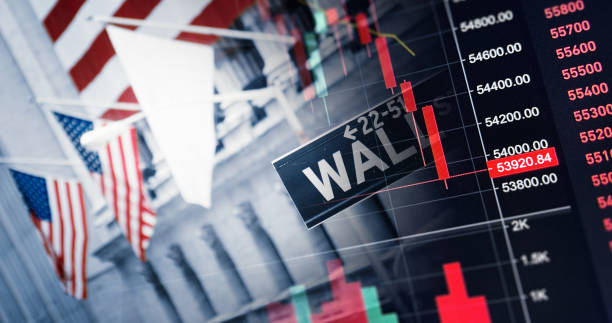FOREX-US dollar recovers, Aussie hits five-year low after China tariff retaliation

By Laura Matthews
NEW YORK, April 4 (Reuters) - The U.S. dollar rebounded against major currencies such as the euro and yen on Friday after Federal Reserve Chairman Jerome Powell acknowledged the repercussions of larger-than-expected U.S. tariffs and signaled a cautious tone on future easing.
Powell said tariffs increased the risk of higher inflation and slower growth, highlighting the difficult path ahead for policymakers at the U.S. central bank.
The Australian dollar, meanwhile, seen as a liquid proxy for the yuan, hit five-year lows against the greenback after China announced additional tariffs on U.S. goods on Friday.
"This is a bit of a more hawkish reaction that he's focusing on the inflationary impact of tariffs. The U.S. economy has been dealing with higher inflation, and because the U.S. is the one doing the tariffs and it will apply to all imports, it's likely to have more impact on the U.S.," said Peter Vassallo, FX portfolio manager at BNP Paribas Asset Management.
"The inflationary concerns are real, and this makes sense as we think about the fact that inflation, for five years now, has been running above target."
Powell's comments followed data earlier in the day showing that nonfarm payrolls rose by 228,000 jobs last month after a downwardly revised 117,000 rise in February, well above the 135,000 forecast. The unemployment rate ticked up to 4.2% from 4.1%.
Markets drew little comfort from the numbers because "they don't factor in any of this week's events or the fallout that will inevitably come with them over the next few weeks," said Helen Given, director of trading, Monex USA.
China announced additional tariffs of 34% on all U.S. goods, starting April 10. The move added to recession concerns and intensified a global stock market rout.
A closely-watched inflation indicator next week will show how much the prices of goods and services are changing for consumers.
The euro EUR=EBS was last down 0.95% to $1.10947. It had jumped 1.8% on Thursday - its biggest daily rise since November 2022 - reaching as high as $1.1147, a level not seen since September 30.
The euro posted its largest weekly rise since March 3.
Markets are predicting four quarter-point interest rate cuts from the Fed in the remainder of this year, and reduced the odds of further Bank of Japan tightening to 11 bps.
They also fully priced in three 25 basis point European Central Bank rate cuts by December EURESTECBM6X7=ICAP.
The dollar index =USD, a measure of the currency against a basket of six major peers, had plunged 1.9% on Thursday, its worst day since November 2022. It rose 0.98% to 103 in afternoon trading on Friday.
The Swiss Franc rose 0.6% EURCHF= versus the euro and hit a six-month high versus the dollar CHF=.
Meanwhile, sterling GBP=D3 declined 1.61% to $1.2889, after pushing as high as $1.3207 a day earlier, the first time since October 3. It was the pound's largest weekly decline since February 24.
Deutsche Bank warned on Thursday of the risk of a crisis of confidence in the U.S. dollar, saying major shifts in capital flow allocations could take over from currency fundamentals and spark disorderly currency moves.
As Chinese markets observed a national holiday on Friday, the dollar edged up 0.2% at 7.2959 yuan in offshore trade CNH=D3. On Thursday, it had leapt as much as 0.7% to a two-month high at 7.3485.
The Australian dollar AUD=D3, which fell to its lowest since early April 2020, was last down 4.42% at $0.60490. Similarly, the New Zealand dollar NZD=D3 was down 3.42% to $0.55960. The Aussie dollar posted its largest weekly loss since March 2020.
The Canadian dollar CAD= dropped 0.81% to 1.4208.
Meanwhile, the greenback pared losses against the yen, trading up 0.58% to 146.92 yen JPY=EBS. It had slumped 2.2% in the prior session, at one point dipping as low as 145.19 yen for the first time since October 2. On the week, the dollar is down the most since early February.
China faces combined duties of some 64%, when also factoring in a tariff of 10% that Trump levied in his first presidential term. Both China and the EU vowed countermeasures, raising the risk of a broader trade war.
Currency bid prices at 4 April 8:25 p.m. GMT |
|
|
|
|
|
|
|
Description | RIC | Last | U.S. Close Previous Session | Pct Change | YTD Pct | High Bid | Low Bid |
Dollar index | =USD | 103.08 | 102.01 | 1.07% | -4.99% | 103.18 | 101.53 |
Euro/Dollar | EUR=EBS | 1.0936 | 1.1053 | -1.04% | 5.64% | $1.1108 | $1.0925 |
Dollar/Yen | JPY=D3 | 146.87 | 146.135 | 0.56% | -6.61% | 147.4 | 144.58 |
Euro/Yen | EURJPY= | 160.64 | 161.41 | -0.48% | -1.58% | 162 | 159.04 |
Dollar/Swiss | CHF=EBS | 0.862 | 0.8594 | 0.31% | -5.01% | 0.8625 | 0.8478 |
Sterling/Dollar | GBP=D3 | 1.286 | 1.31 | -1.8% | 2.85% | $1.3113 | $1.2857 |
Dollar/Canadian | CAD=D3 | 1.4252 | 1.4097 | 1.12% | -0.87% | 1.4259 | 1.4054 |
Aussie/Dollar | AUD=D3 | 0.6032 | 0.6329 | -4.65% | -2.48% | $0.6332 | $0.5987 |
Euro/Swiss | EURCHF= | 0.9427 | 0.9492 | -0.68% | 0.36% | 0.9496 | 0.9364 |
Euro/Sterling | EURGBP= | 0.85 | 0.8432 | 0.81% | 2.74% | 0.8523 | 0.8432 |
NZ Dollar/Dollar | NZD=D3 | 0.5582 | 0.5794 | -3.49% | -0.06% | $0.5797 | 0.5553 |
Dollar/Norway | NOK= | 10.7504 | 10.3188 | 4.18% | -5.41% | 10.8266 | 10.3066 |
Euro/Norway | EURNOK= | 11.7591 | 11.4046 | 3.11% | -0.08% | 11.841 | 11.403 |
Dollar/Sweden | SEK= | 10.0393 | 9.7647 | 2.81% | -8.88% | 10.0972 | 9.7451 |
Euro/Sweden | EURSEK= | 10.9813 | 10.7931 | 1.74% | -4.23% | 11.0924 | 10.794 |



-8fe429c75f0a48aa94f43d6c5c639094.jpg)

_croped_889x500 (1)-666c3deec8f74a1d91bccfc0edb42909.jpg)
.jpg)
